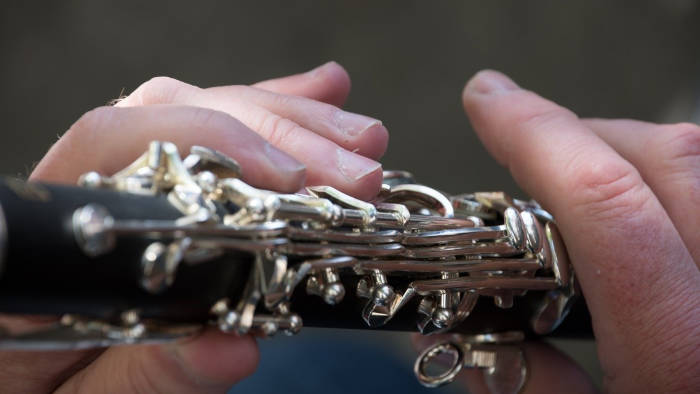
This post may contain affiliate links and we may receive compensation if you purchase products linked to below. As an Amazon Associate, we can earn from qualifying purchases. Please see our Terms and Conditions for details.
Fingering charts are helpful for any clarinetist to have on hand. Even if you’re an experienced player, there’s always a chance you’ll forget a fingering or need to work out a new alternate fingering for a tricky passage.
I could’ve saved time and effort by properly learning the fingerings in elementary or middle school. But instead I had to sit down and learn them all later as a high school student.
Learning to read a clarinet fingering chart is an essential skill for novice players to learn. The positions of all the keys on the upper and lower joints need to be learned by touch. And a fingering chart can help a lot for this. That’s why, even today, I keep a fingering chart in my at-home practice folder.
Let’s explore how to use common fingering charts like the one below. I’ll also share some tips for how to learn the various clarinet notes. Feel free to download and print the below charts in PDF format at any time.
How fingering charts help clarinetists improve
Most young players have basic fingering charts in their band method books to help them learn common fingerings. These charts expand depending on the level of the player, starting from easy notes below the staff and on the staff and ending at the very high, or altissimo, register.
But fingering charts can also be an indispensable reference for alternate fingerings. And some clarinet passages are difficult or impossible to play with the primary fingerings taught to elementary and middle school students.
For example, B-flat and B-natural just below the staff are played with the first finger on the right hand alone and the middle finger on the right hand alone. It’s necessary to use the alternate key located between the first and second tone holes to produce a smooth result.

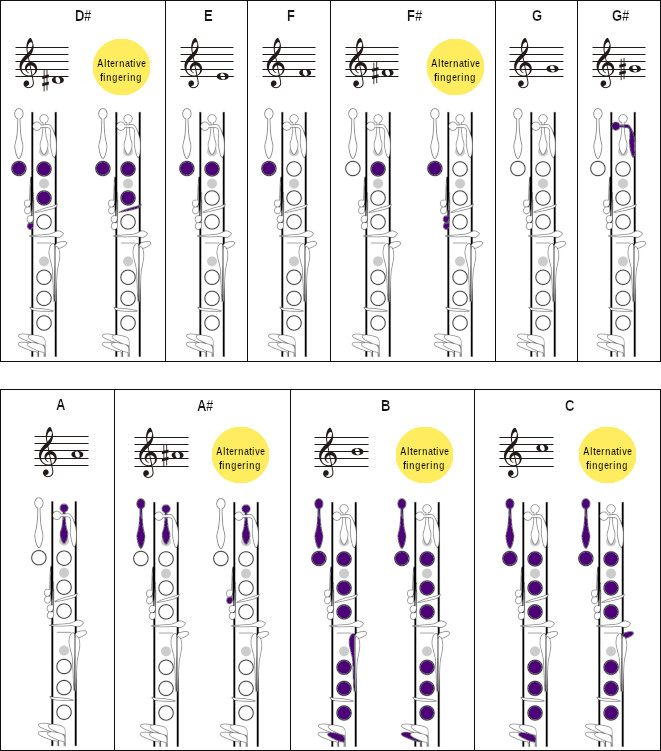
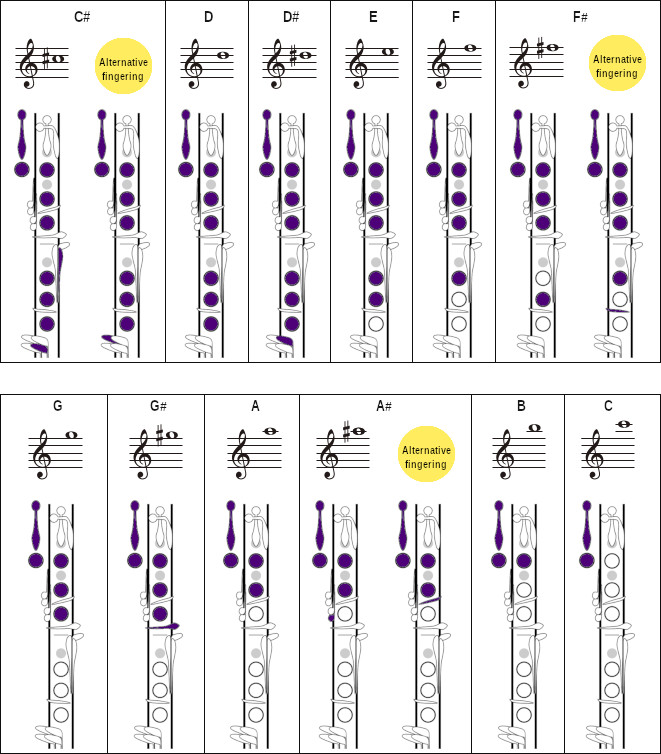
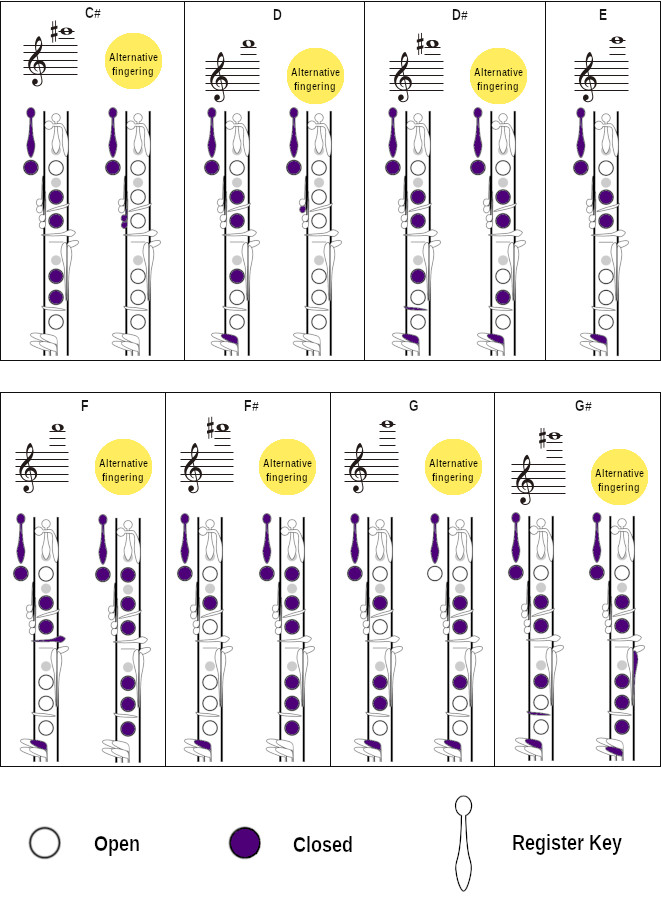
Tips for using clarinet fingering charts
Reading and interpreting fingering charts is typically self-explanatory. But some aspects of using charts may be less obvious.
When viewing a fingering chart and using it to learn new notes, always hold the upper joint in your left hand and the lower joint in your right.
Reaching all the keys with the fingers is relatively easy on the B-flat clarinet. While reaching the lowest keys on the bass clarinet and contrabass clarinet can take a bit of stretching. Make sure your hands are flexible enough to get to these positions.
Don’t rely too much on charts; follow a proper lesson book
Don’t rely too much on fingering charts themselves. The idea is to refer to them until you eventually learn the fingerings by heart.
Following a proper lesson book will take you much further in learning this instrument than the charts alone. Essential Elements for Band has an excellent series for clarinet that many music teachers and band directors rely on.
If you’ve even binge watched several YouTube videos to study new techniques, you may have seen one of the books featured there.
Essential Elements books are great because they have a structured approach with a clear presentation. These book and others like them have tips for mastering fingerings, learning scales and much more.
Learning clarinet notes through repetition and scales
Repetition through playing scales is an excellent way to get the positions of the keys fixed in your mind and in your muscle memory. Make sure you can play all the important scales fluently, including sharps and flats. This will go a long way toward increasing your speed and accuracy.
It’s also a good idea to spend a week or two on each scale when you’re first starting out. The notes below the staff and on the staff are the most important to learn for young players. Most young students will start with the C scale and add sharps and flats as they go along. As they become fluent, they will easily be able to play scales with many sharps or flats.
Practicing chromatic scales can be especially helpful for learning the alternate fingerings possible on the clarinet. Memorizing two or three octaves of a chromatic scale is a must for students at the middle and high school levels.
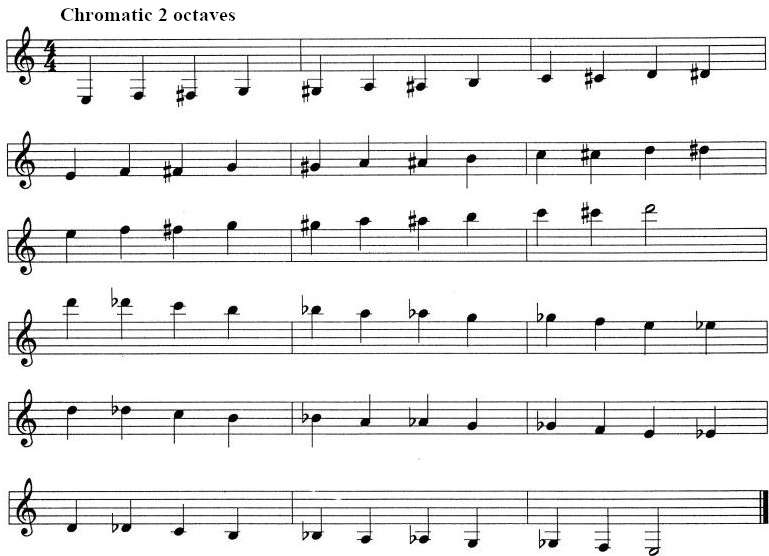
It also never hurts for older or more experienced players to take the time to work on their scales, especially the chromatic scale.
Working with alternate fingerings
Alternate fingerings help to minimize the hand movement necessary to reach certain notes in different pieces of music. Not all alternate fingerings are created equal. Some alternate fingerings are sharp or flat compared to your instrument’s range.
Practicing with an electronic tuner or tuner app on a smartphone can help ensure your alternate fingerings are tonally in concert with the rest of the passage. Experienced players will be able to correct the pitch on their own, either with their embouchure (the position of their mouth) or by adding selected extra keys to the printed fingering.
Writing in any alternate fingerings that will be needed is often helpful when studying a new piece of music. Many players write a “C”, for “chromatic”, above the note that needs to be played with an alternate fingering.
Learning the music with the alternate fingerings the first time around is far better than trying to go back and change the fingerings after you’ve become familiar with the piece. Muscle memory may make this difficult if you learn the piece the “wrong” way first.
Pacing yourself for mastery
Don’t push yourself too quickly when it comes to learning scales and fingerings. It’s better to spend the time to truly master a scale with all its fingerings before moving on to the next one. Rushing yourself can hinder your development as a musician.
Most clarinetist can’t reach the altissimo (very high) register above the staff until the intermediate level. So beginners can safely put off learning those fingerings for now.
Conclusion
Taking the time to learn all the fingerings and alternate fingerings on the clarinet will make you a better musician. The best way to learn new fingerings is to play scales, whether they’re diatonic (major or minor) scales or chromatic scales.
When learning a difficult passage, keep a clarinet fingering chart on hand and note any alternate fingerings you’ll need to use.
Becoming fluent on the clarinet is rewarding. And when you take the time to properly learn your scales or your practice pieces, you’ll be well on your way to following along with a group or playing solo music on your own.
Do you have any other tips for learning clarinet fingering or using charts effectively? Share your experience in the comments section below!
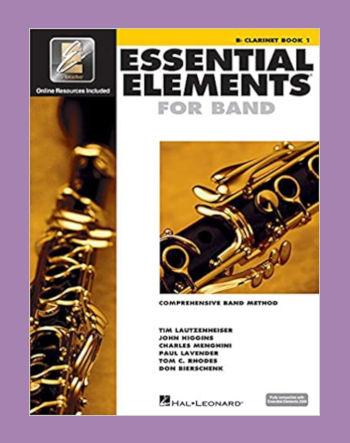
I could not find a way to reproduce your scale and fingering chart for my students. Is there a way in which I can print a copy of your material?
Hi Charles,
Thanks for your message. You can download and print a copy of these fingering charts here:
https://musicalinstrumentguide.com/wp-content/uploads/2020/02/clarinet-fingering-chart.pdf
is that a specific link for sharing? i saved image from the browser im using (google chrome)
My info details are added.
Hi Jo,
Yes, you’re welcome to share the PDF link directly as you wish.
I am a beginning student (74 probably not much hope, but I used to play the flute) and I just wanted you to know your chart is absolutely the best I’ve seen. Thanks!!!
🙂
Hi Jim,
Thanks for your message. We’re happy you like the fingering chart.
Best of luck with your journey learning this wonderful instrument!
Very much a beginner. I don’t see a change in fingering from an E to a F on the fingering chart. What am I missing?
Hey Gary,
Thanks for your message. It’s a subtle difference. But if you look closely in the middle of the diagram for E, you can see the E key is pressed. Whereas the same key is left open in the diagram for F.
Missing is the mid-range (one note above the staff) Bb/A# employing the right and left index fingers on the first holes of the left and right sections respectively. For tight octave jumps in the key of Bb, this fingering is necessary. You are offering just the main fingering and the first alternate fingering using the left hand alone.